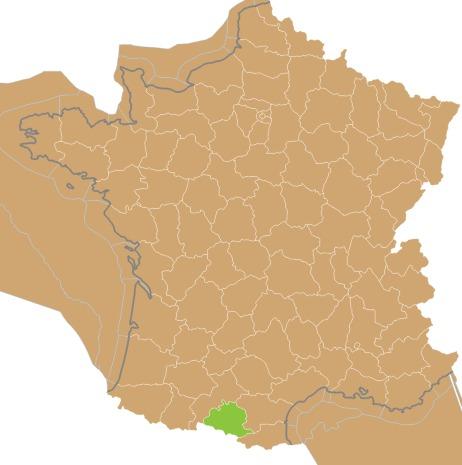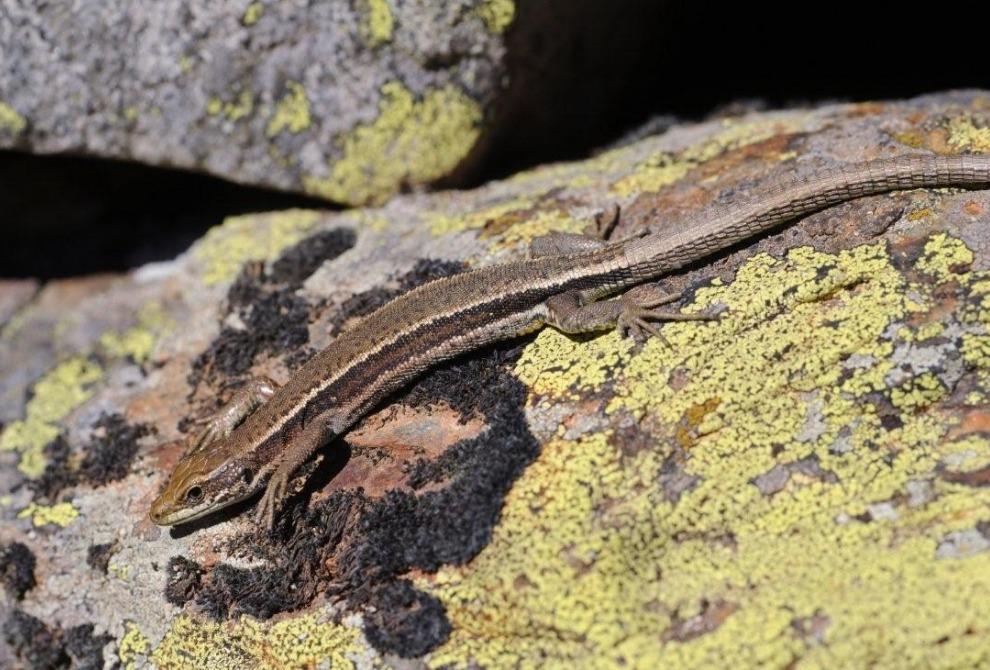Aurelio's rock lizard
Iberolacerta aurelioi
Lézard d’Aurelio
The Aurelio lizard is a Pyrenean endemic that occupies the alpine stage of the chain extending from the southern slope of the Mont Roig massif (the "Mont Rouch" ariégeois) (province of Lleida, Catalonia, Spain) to the massif of the peak of Serrère (Andorra / Ariège).
Its range is curiously divided into two distinct nuclei, about 15 km apart (surveys conducted so far between these two areas have proved unsuccessful):
the Spanish side of the Mont Rouch massif
the Spanish, Andorran and French slopes of the reliefs extending from the Pic d'Estats / Montcalm massif to the Pic de Serrère massif
It is, like the Aran Rock Lizard a species that is found only in the Midi-Pyrénées region in France, in a single department: Ariège.
In Ariège, it occupies two main areas: the border massifs of the upper Vicdessos on the one hand (from the Étang de Montestaure in the west), and the border massifs of the western part of the upper Aston on the other hand (up to the valley of the Rebenne in the east). The populations appear to be both more numerous and larger in the upper Vicdessos, where it is more easily observed. It has never been observed on the French side of Mont Rouch, but it may be present. Time will tell.
They are a small lizard whose size and morphology are quite similar to those of the wall lizard (Podarcis muralis). The body measures approximately 5 cm to 6 cm in adults with the tail about twice the legnth givig a total of about 15 cm.
They are grey brown to hazelnut brown and as with the other two Pyrenean lizards, the back does not have a true dark vertebral line (it is simply darker than the two dorso-lateral lines or bands that frame it) but the tail on the other hand bears a diffuse dark longitudinal line continuing the central coloration of the back. The dark band of the flanks, which extends to the sides of the tail, is also often spiked light, especially in males. The color of the ventral side is remarkable, golden yellow to orange, with often more or less confluent black spots on the anterior half of the ventral scales. The yellow-orange hue, often reduced to the lower part of the belly, can be observed in dorsal and profile view as it extends to the inner thigh and arm, and slightly gains the base of the flanks and tail. Melanism, leucism and albinism do not appear to have been reported, but they certainly exist. Males are more boldly coloured esêcially in the breeding season.
They are to be found from 1960 m to 3077 m in France where conditions are harsh and where hibernation can be extremely long. Mating takes place as soon as the snows melt and females lay their eggs in early summer and they hatch in late summer. They feed on various invertebrates (insects and their larvae, arachnids, worms ...).
Like all endemic species of the Pyrenees whose biology is adapted to the climatic regime of the middle and high mountains (and associated ecosystems), the Aurelio's lizard is threatened by global warming.

